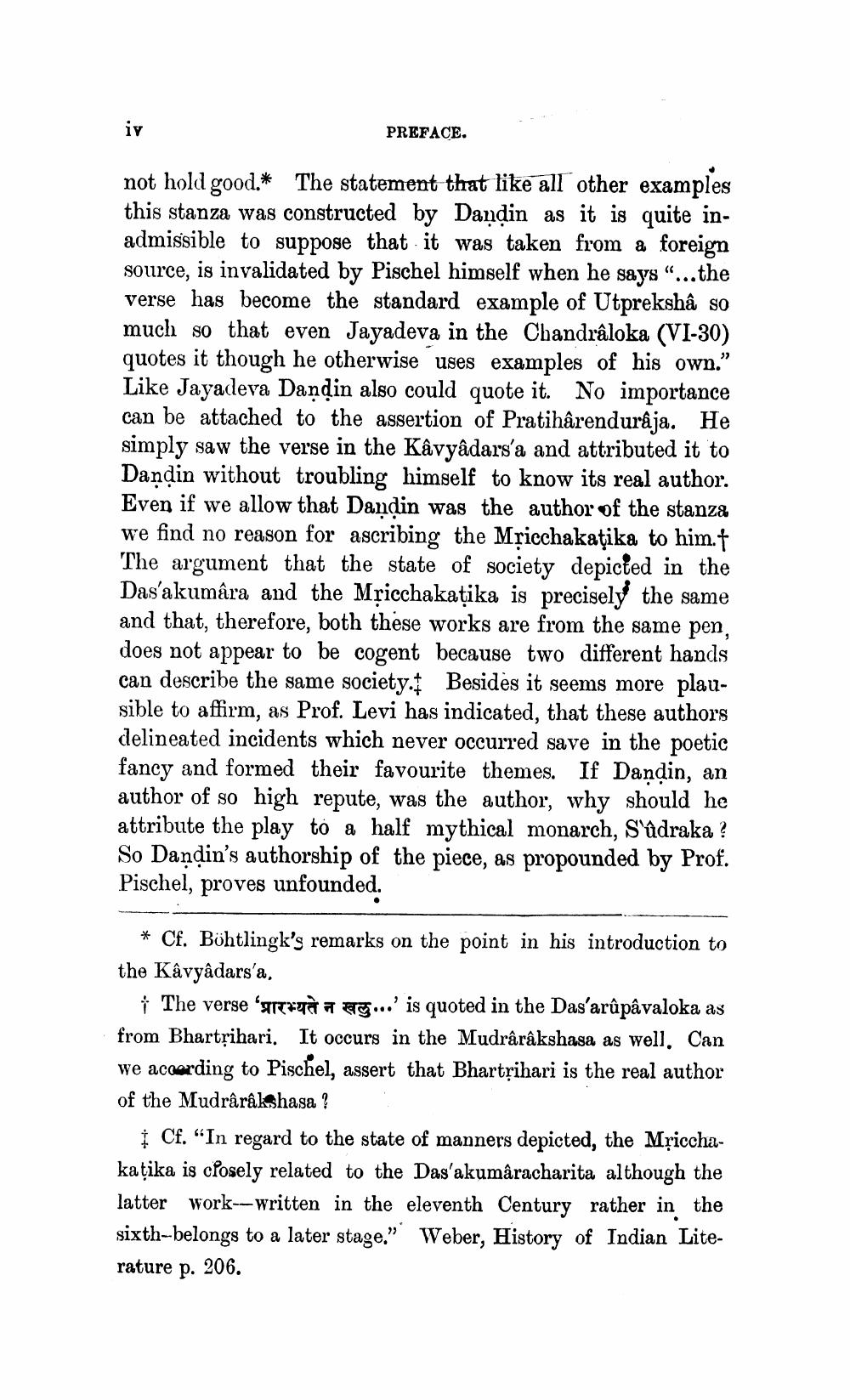________________
PREFACE.
not hold good.* The statement that like all other examples this stanza was constructed by Dandin as it is quite in. admissible to suppose that it was taken from a foreign source, is invalidated by Pischel himself when he says “...the verse has become the standard example of Utprekshâ so much so that even Jayadeva in the Chandraloka (VI-30) quotes it though he otherwise uses examples of his own.” Like Jayadeva Dandin also could quote it. No importance can be attached to the assertion of Pratihârendurâja. He simply saw the verse in the Kâvyâdars'a and attributed it to Dandin without troubling himself to know its real author. Even if we allow that Dandin was the author of the stanza we find no reason for ascribing the Msicchakatika to him." The argument that the state of society depicted in the Das'akumâra and the Mricchakatika is precisely the same and that, therefore, both these works are from the same pen, does not appear to be cogent because two different hands can describe the same society. Besides it seems more plausible to affirm, as Prof. Levi has indicated, that these authors delineated incidents which never occurred save in the poetic fancy and formed their favourite themes. If Dandin, an author of so high repute, was the author, why should he attribute the play to a half mythical monarch, S'ûdraka? So Daņàin's authorship of the piece, as propounded by Prof. Pischel, proves unfounded.
* Cf. Böhtlingk's remarks on the point in his introduction to the Kâvyâdars'a.
i The verse 'STITÀ TES...' is quoted in the Das'arâpâvaloka as from Bhartřihari. It occurs in the Mudrârâkshasa as well. Can we according to Pischel, assert that Bhartřihari is the real author of the Mudrârâkshasa ?
| Cf. "In regard to the state of manners depicted, the Mțicchakatika is closely related to the Das'akumâracharita although the latter work--written in the eleventh Century rather in the sixth-belongs to a later stage."' Weber, History of Indian Literature p. 206.




